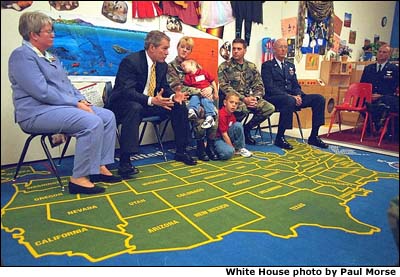
400-wethepeople-01.jpg, image/jpeg, 400x277
The U.S. government is devising a plan to infuse much-needed additional funding into education and training programs for disadvantaged youth, a program that purportedly is designed to address the root causes behind the exclusion of some youth from these programs.

400-wethepeople-01.jpg, image/jpeg, 400x277
One catch: you won't see these funds going toward the kids of South Central Los Angeles or any other U.S. city or rural region. Rather, it's a project for Nepal, in South Central Asia.
According to a planning document that ThePeacockReport.com (TPR) located via a routine search of the FedBizOpps database:
"This multifaceted program will combine literacy and life skills education; technical and vocational training linked to employment; training to increase agricultural productivity and raise rural incomes; and targeted scholarships for disadvantaged youth (e.g., internally displaced persons, low caste groups, ethnic minorities and girls) to increase access to primary, secondary and higher level (10+2 and college certificate level) education."
A "cross-cutting theme" throughout this education and training endeavor is "conflict resolution, peace building, and the promotion of human rights" among disadvantaged and conflict-related displaced youth, the document says. Pending future congressional approval, the U.S. Agency for International Development will expand this five-year, -16 million initiative to also include "former Maoist combatants," it says.
The "Education for Income Generation and Conflict Mitigation in Nepal" program, as it is known, will be carried out with the assistance of a still-to-be-selected private contractor.
ANALYSIS: As former U.S. Education Secretary Richard W. Riley once wrote, "too many young people are giving up on America and dropping out, living lives of anger, poverty and spiritual numbness. And too many Americans are separated from each other by the pernicious belief that children who are poor and disadvantaged do not have what it takes to reach high levels of achievement."
Consequently, Riley added that the U.S. "must target resources to where needs are greatest and in amounts sufficient to make a difference. Federal support is currently spread too thinly across too many schools. ESEA programs must target communities and schools that have the least capacity, and the greatest need, to create conditions for high-performance teaching and learning."
While it is true that the federal government funds U.S. education programs to the tune of billions of dollars annually, the continued existence of crumbling elementary and high schools nationwide combined with the exhorbitant and prohibitive cost of earning a college degree raises questions as to why Washington, D.C., policymakers are steering critical education-centric funds outside of, rather than throughout, the United States.
tpr.typepad.com/thepeacockreport/2007/01/feds_plan_to_st....
Original: Feds Plan to Step Up Education Funding in South Central